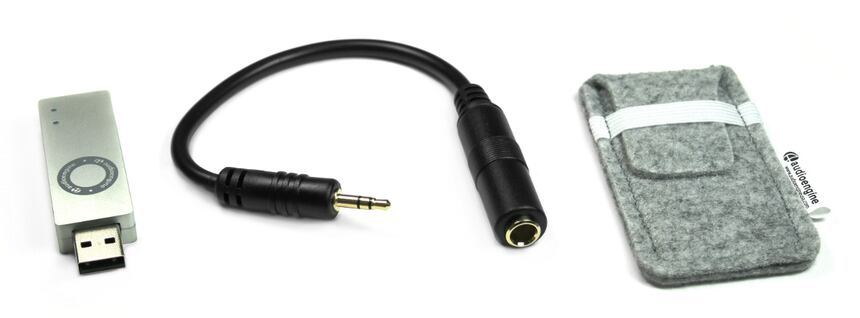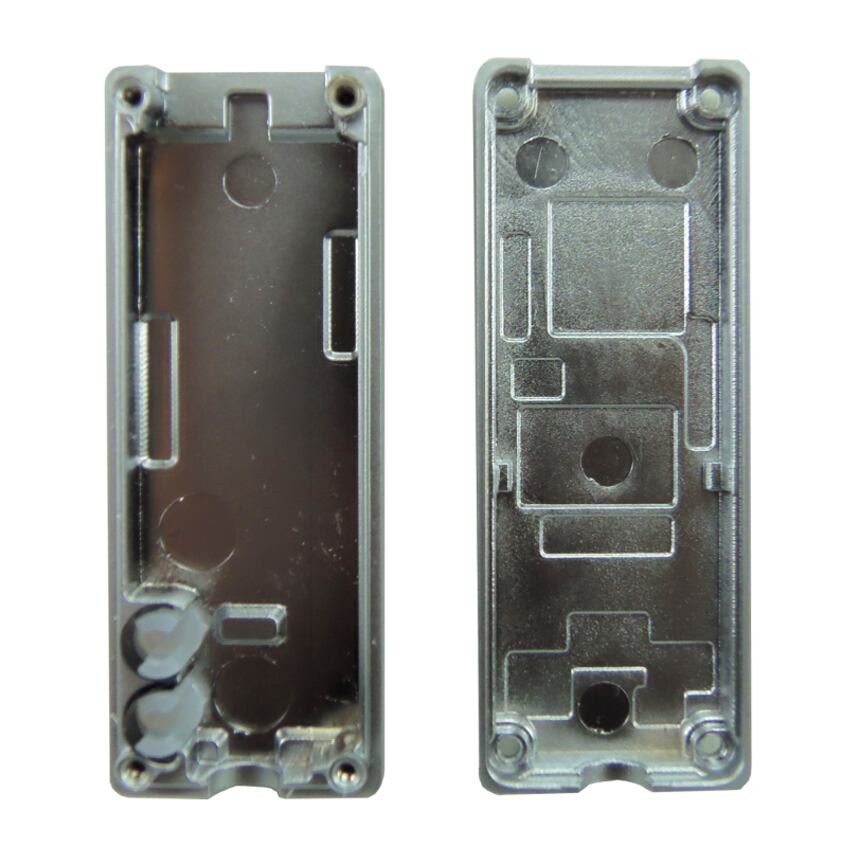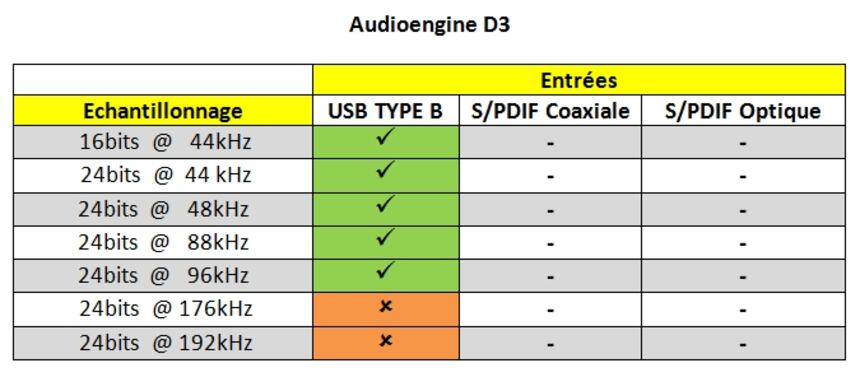Audioengine is an American brand which, up until recently, had limited itself to manufacturing monitoring speakers for professional studios.
In 2002, after 36 years in the business (and in large-scale electronics retail for brands like Harman Kardon, Gibson Guitar, Alesis Studio Electronics, Escient, and Apple Computer), the team that founded the firm decided to launch an audio company of its own. The challenge was to come up with a design for and create high quality speakers of their own at prices that were acceptable for the pro audio market.
Based on their experience in the pro audio industry and after listening to online music in 2005 using a MacBook and an AirPort Express Base Station, Audioengine the amplified A5 speaker which was designed to be connected to mobile devices in order play the music they store, and also to recharge them via a USB A connector. This A5 speaker became the A5+, for which the current carrying capacity of the USB A has been upgraded too 500mA, among other improvements.
But Audioengine doesn?t just make powered acoustic speakers, oh no. They have passive speakers, a subwoofer, an amplifier, accessories, numerous DACs, including the recent D3 model, the subject of this test, a wireless-connected set, the D2, which transmits HD files of 24 bits at 96kHz, which was also been present on the Qobuz Hi-Fi Testing Ground.
Now let?s see what lies in store for us with this this USB key-format DAC D3, its headphone outlet and 24 bit/96kHz HD reader; which isn?t just nice and light for use on the move, but also fits snugly into its baize pouch.

Electronics
With the use of such a small circuit, it is to be expected that components will be arranged on both sides of the board ? in fact, on all four sides, as an additional circuit has been mounted on one face of the board using two multipoint connectors.

On this side of the circuit you have the USB connector, the signal relay, the headphone connection and the two LED status lights. The small additional circuit serves to create symmetrical +2.5V and -2.5V voltages, for powering the headphone amp.
This avoids the use of coupling capacitators on the headphone out, which would have to be electrochemical in this instance. Not only is this type of capacitator not recommended for audio connections, but it forms a high-pass filter for the headphones, which could affect the range of the bass according to the value of the capacitator and the headphone impedance.
So there is good reason to power the headphone amp using symmetrical voltages in order to avoid using capacitators on the connection with the headphone.
The other side holds the USB interface circuit, which is a Texas Instruments TAS1020B model, which works asynchronously but limited to USB Audio Class 1.0, thus not dealing with files above 24-bit/96kHz and not requiring the installation of drivers (for PC and for Mac).

Next to it is the digital analogue converter from Asahi Kasei, which bears the reference AKM4396 and which can function at up to 192kHz on 24-bit.
This circuit, which contains a switched capacitator filter, doesn?t have a filter for the operational amp at the outlet of this circuit, but instead there is a headphone amplifier right on the outlet.
This is a LME49726 from Texas Instruments, a low-noise and low-distortion model, which is protected against short circuits and which can deliver a current of more than 300mA with an overall voltage of 5V (that means nearly 3W to dissipate, requiring cooling for the circuit, which comes in a small SMD housing).
Therefore internal faces of the two half-shells that make up this housing come with grooves into which the different integrated circuits are fitted, so that their upper face is in contact with the aluminium component of the housing, and so can be cooled (it heats up during use).

Listening
As we said before, the DAC Audioengine D3 doesn?t require the installation of drivers: all you need to do is to plug it into your USB port, but making sure that you only use it to read files of 24 bits at 96kHz.
Important: this restriction in terms of what files it can read doesn?t affect the D3?s sound quality, and this little musical USB key makes for some very enjoyable listening.
We tested the D3 with headphones only, using the excellent Beyerdynamic Custom One Pro: which is really what this kind of tiny DAC was built for ? but it is possible to use it to listen to music over speakers by means of a 3.5mm male jack stereo-cinch stereo connection. This DAC doesn?t have a volume control, so volume can be controlled using the computer?s volume control, or using the reader software.
So, when listening to Vivaldi?s "Gloria" with Rinaldo Alessandrini directing the Concerto Italiano (in its 24-bit Studio Master version, at 44.1kHz), the D3 doesn?t hold back on the decibels; and given that Gloria is made a brilliant work by its instrumentation and the frequent use of the female voice, the restitution doesn?t lean too heavily on the treble, and allows the listener a high level of enjoyment of the music, and makes it possible to appreciate the tonal balance, the beautiful timbres and a flawless dynamic with brasses which do not saturate the sound when they play the thunderous and ?glorious? theme.
The beautiful and little-known first Cello Concerto by Dvorak, with Alexander Rudin directing the Musica Viva ensemble (24-bit Studio Master version, at 96kHz) is given a density and a delicate touch which places slightly more accent than normal on the hallmark sounds of Musica Viva, and the D3 offers a particularly eloquent and pleasing reproduction.
The ever-dependable Hotel Califormia by The Eagles, which we have been playing during tests for some time now, is given a very good treatment, hitting all the high points but not excessively, with very precise and present vocals, and a very good performance on the bass, where once again the sound dynamics are dealt with very well.
Thanks to its relatively delicate approach, the D3 offers an exceptionally lifelike reproduction of the albumLove Letters by Metronomy, which was recorded on vinyl, and from the first seconds one really gets the feeling of listening to a record, with a little master noise and, at the start of I?m Aquarius, we can hear a residue of the distortion at 100Hz (!), and this feeling doesn?t go away for the whole album.
To conclude, we are a bit sad that this little DAC Audioengine D3 can?t read formats greater than 24 bits at 96 kHz, because it delivers great sound with a certain gentleness and its headphone outlet has no problem delivering ?the power?. It is, nevertheless, an excellent choice if 24/96 meets your needs, and its price, like its elegant aluminium box, is not to be sniffed at, especially when compared to some of its competitors which have also adopted the USB-key DAC format
Price : around 190 euros
Sound & Colors site (importer)

If you are a manufacturer, importer, distributor or actor in the audio business and you would like to contact us, please do so using the following address: newstech@qobuz.com
Original Text: https://www.qobuz.com/info/Hi-Fi/Bancs-d-essai/Audioengine-DAC-D3175068
Original Author: Philippe Daussin
Translation: Ed Maltby
